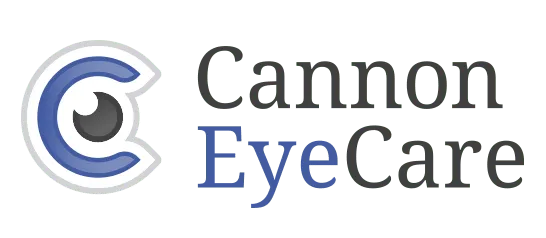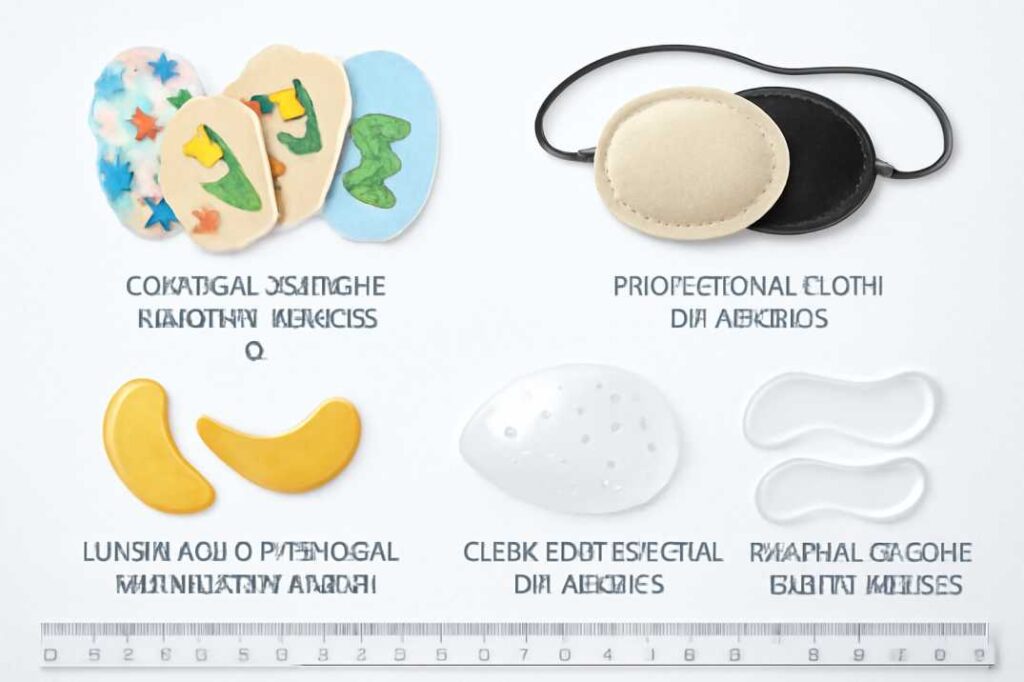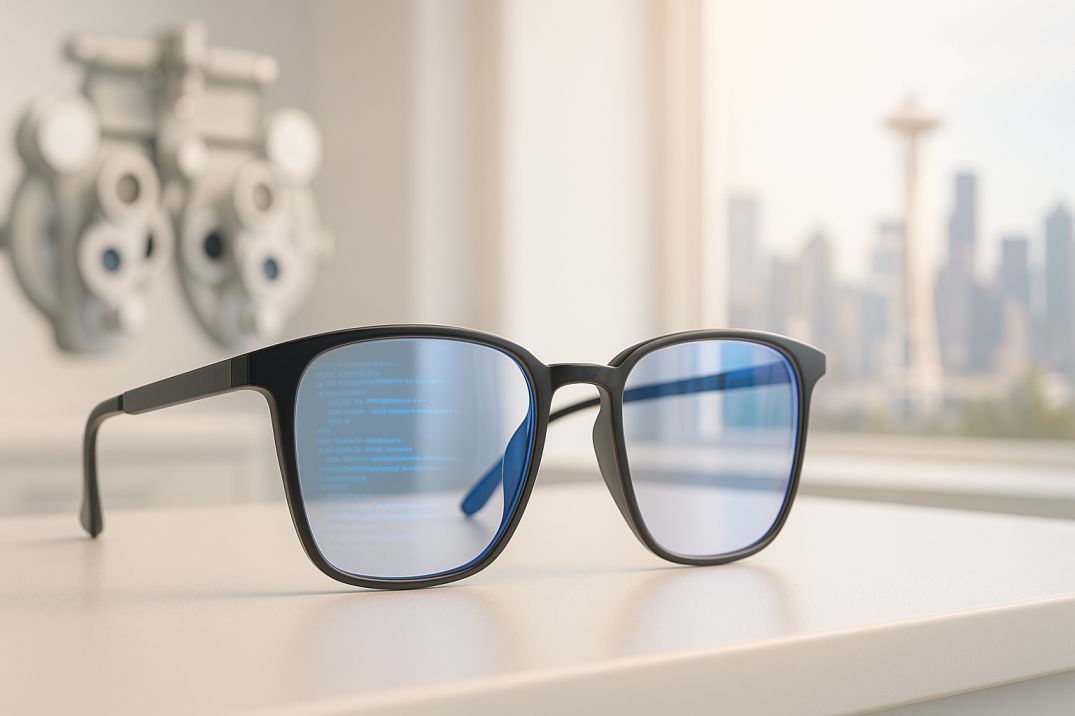Patches
Executive Summary: Eye patches serve dual critical functions in modern healthcare and beauty—treating vision disorders like amblyopia with proven 67% success rates and delivering advanced skincare benefits with clinically validated 98% improvement in under-eye puffiness. This comprehensive analysis examines current applications, emerging technologies, and market trends shaping the eye patch industry through 2032.
Eye patches have undergone a remarkable transformation from rudimentary medical tools to sophisticated therapeutic devices and luxury skincare solutions. Today’s eye patches represent the convergence of centuries-old medical wisdom with cutting-edge materials science, offering evidence-based treatments for vision disorders while simultaneously addressing the $15.7 billion global beauty market’s demand for effective anti-aging solutions.
This evolution reflects broader trends in personalized healthcare and precision beauty, where targeted treatments deliver measurable outcomes backed by rigorous clinical research. Understanding these applications enables healthcare professionals, patients, and consumers to make informed decisions about incorporating eye patches into comprehensive care regimens.
Medical Applications: Evidence-Based Vision Treatment
Therapeutic Foundations and Clinical Efficacy
Medical eye patches remain the gold standard for treating amblyopia, affecting 2-5% of children globally and representing the leading cause of monocular vision loss in pediatric populations. The therapeutic principle—occlusion therapy—forces the weaker eye to strengthen by temporarily blocking vision in the dominant eye, promoting neural pathway development during critical periods of visual maturation.
Recent landmark research has refined treatment protocols significantly. The 2024 EuPatch multicenter randomized controlled trial, published in The Lancet, analyzed 334 children across 30 European hospitals and demonstrated that early patching intervention (after three weeks of optical correction) achieved superior outcomes compared to extended optical treatment approaches. Specifically, early intervention groups showed 67% treatment success rates versus 54% in extended optical treatment cohorts—a statistically significant improvement that has reshaped clinical practice guidelines.
Contemporary Treatment Protocols
Current evidence-based protocols emphasize efficiency and patient compliance. The Pediatric Eye Disease Investigator Group’s extensive research confirms that two hours of daily patching combined with one hour of near-vision activities equals the effectiveness of longer treatment durations for mild-to-moderate amblyopia cases. This finding has profound implications for treatment adherence, particularly given the psychosocial challenges associated with prolonged patching regimens.
Treatment success rates vary by patient demographics and severity. Children under 12 years demonstrate 75% success rates, while those over 12 maintain 60.7% success rates—challenging historical assumptions about age-related treatment limitations. These data support expanded treatment windows and personalized therapeutic approaches based on individual patient factors rather than arbitrary age cutoffs.
Cosmetic Applications: Scientific Skincare Innovation
Dermatological Science and Mechanism of Action
The cosmetic eye patch sector represents sophisticated dermatological innovation, leveraging advanced delivery systems to address periorbital aging concerns. Under-eye patches utilize hydrogel matrices, occlusive technologies, and targeted ingredient delivery to treat dark circles, puffiness, fine lines, and loss of skin elasticity—conditions exacerbated by the periorbital region’s unique anatomical characteristics.
The skin surrounding the eyes measures approximately 0.5mm thick—significantly thinner than the 2mm average facial skin thickness—making it particularly susceptible to environmental damage, dehydration, and premature aging. This anatomical vulnerability, combined with decreased collagen production (1% annually after age 20), creates ideal conditions for visible aging signs that cosmetic eye patches specifically target.
Clinical Validation and Efficacy Data
Consumer perception studies involving 105 participants aged 25-70 with self-reported sensitive skin demonstrate measurable efficacy outcomes. Single-application results show 46% of participants experienced reduced under-eye bags, while 79% reported decreased puffiness. Extended use over four weeks yielded more dramatic improvements: 98% of participants reported sustained under-eye bag reduction, with 95% experiencing enhanced under-eye brightness.
These outcomes reflect sophisticated formulation science incorporating hyaluronic acid (molecular weight optimization for enhanced penetration), caffeine (vasoconstriction for puffiness reduction), peptides (collagen synthesis stimulation), and botanical extracts (anti-inflammatory and antioxidant properties). Advanced delivery mechanisms, including microneedle technologies, increase ingredient absorption efficiency by up to 80% compared to traditional topical applications.
Market Analysis and Industry Trends
Economic Landscape and Growth Projections
The global eye mask market demonstrates robust expansion, growing from $5.2 billion (2023) to a projected $15.7 billion by 2032—representing a compound annual growth rate of 12.5%. This growth trajectory reflects multiple convergent factors: increased consumer awareness of preventive skincare, aging demographics, social media influence on beauty standards, and expanded product accessibility through e-commerce channels.
Market segmentation reveals distinct growth patterns across product categories. Hydrogel patches dominate due to superior cooling effects and ingredient delivery capabilities, while reusable designs show accelerated growth (15% CAGR) driven by sustainability consciousness. The medical eye patches segment, valued at $1.6 billion (2023), projects more modest but steady growth to $2.6 billion by 2030 (6.1% CAGR), reflecting the specialized nature of therapeutic applications.
Consumer Behavior and Digital Influence
Digital platforms significantly impact consumer behavior patterns. Google Trends data indicates 96% growth in “eye cream” searches from August 2024 to August 2025, correlating with seasonal beauty routines and holiday gifting cycles. Social media platforms, particularly TikTok, drive viral product adoption—the hashtag #bestundereyepatches generated 6.3 million posts, demonstrating substantial consumer engagement and product trial behaviors.
Price sensitivity analysis reveals market stratification from budget-conscious consumers ($1.25 per pair for mass market options like Grace & Stella) to luxury segment purchasers ($11.67 per pair for premium brands like Talika, with reusability features reducing per-use costs to approximately $4). This pricing spectrum accommodates diverse consumer segments while maintaining accessible entry points for trial and adoption.
Technological Innovation and Future Directions
Emerging Technologies and Applications
The eye patch industry stands at the intersection of several technological convergence points. LED light therapy integration represents one promising avenue, with red light therapy eye masks demonstrating efficacy in clinical trials for collagen stimulation and cellular regeneration. These devices typically operate at 630-700nm wavelengths with near-infrared components (700-1440nm) for deeper tissue penetration.
Smart patch technologies incorporate sensors for real-time skin condition monitoring, automatic ingredient release systems, and mobile application connectivity for personalized treatment protocols. These innovations align with broader digital health trends emphasizing data-driven, personalized care approaches.
Bioengineering advances focus on wireless, battery-free systems utilizing ultrasonic power transmission. Research demonstrates successful axial length reduction in myopia treatment applications, suggesting potential expansion into other therapeutic domains. Biodegradable materials research addresses environmental concerns while maintaining efficacy standards—patches demonstrating ready biodegradation within 28 days under controlled conditions.
Regulatory Landscape and Quality Standards
Medical eye patches operate under stringent regulatory frameworks, requiring FDA approval for therapeutic claims and ongoing safety monitoring. The cosmetic sector faces increasing scrutiny regarding ingredient safety, environmental impact, and marketing claim substantiation. European Union regulations mandate comprehensive ingredient disclosure and safety testing, influencing global manufacturing standards.
Quality assurance protocols emphasize manufacturing consistency, ingredient purity, and contamination prevention. Good Manufacturing Practice (GMP) certification becomes increasingly important for premium brands seeking to differentiate through quality assurance rather than price competition alone.
Clinical Considerations and Safety Profiles
Medical Applications: Risk Assessment and Monitoring
Medical eye patch therapy requires professional supervision and regular monitoring to prevent potential complications. Primary concerns include reverse amblyopia (dominant eye deterioration), skin irritation from adhesive materials, and psychological impacts associated with social stigma or treatment resistance.
Contemporary protocols emphasize patient education, family engagement, and compliance strategies to optimize treatment outcomes while minimizing adverse effects. Hypoallergenic materials reduce skin sensitivity risks, while colorful, appealing designs improve pediatric acceptance and adherence rates.
Cosmetic Applications: Dermatological Safety
Cosmetic eye patches generally demonstrate favorable safety profiles, with formulations designed for sensitive periorbital skin. However, potential adverse reactions include contact dermatitis, allergic responses to specific ingredients, and temporary skin sensitization. Patch testing remains recommended for individuals with known sensitivities or reactive skin conditions.
Quality cosmetic patches undergo dermatological testing and often carry “ophthalmologist tested” designations for periorbital safety validation. Ingredient transparency initiatives help consumers identify potential allergens and make informed product selections based on individual skin profiles.
Professional Recommendations and Best Practices
Medical Provider Guidelines
Eye care professionals should maintain current knowledge of evolving treatment protocols, particularly given recent research demonstrating early intervention efficacy. Treatment individualization based on patient age, severity, compliance factors, and psychosocial considerations optimizes outcomes while minimizing treatment burden.
Regular follow-up scheduling prevents complications and enables treatment modification based on progress assessment. Patient education materials should address treatment rationale, expected timelines, potential side effects, and compliance strategies to support successful outcomes.
Beauty Industry Professional Insights
Skincare professionals increasingly incorporate under-eye patches into comprehensive treatment protocols, recognizing their efficacy for targeted concerns. Professional application techniques, ingredient selection based on client skin analysis, and combination with other treatments enhance results and client satisfaction.
Celebrity esthetician recommendations emphasize pre-makeup application for hydration and de-puffing, with refrigerated storage enhancing cooling effects. Professional-grade patches often contain higher active ingredient concentrations and utilize advanced delivery systems compared to consumer products.
Economic Analysis and Value Propositions
Healthcare Economics
Medical eye patches demonstrate favorable cost-effectiveness profiles, particularly when insurance coverage applies for diagnosed conditions. Early intervention prevents potential lifelong visual impairment, reducing long-term healthcare costs and improving quality of life outcomes. Treatment success rates of 67-75% justify intervention costs when weighed against untreated amblyopia consequences.
Consumer Beauty Investment Analysis
Beauty eye patches offer variable value propositions across price points. Budget options ($1.25-2.50 per pair) provide accessible entry points for trial and regular use. Mid-tier products ($5-15 per pair) typically offer enhanced formulations and branded experiences. Luxury options ($11.67+ per pair) emphasize premium ingredients, packaging, and often include reusability features that reduce per-application costs.
Consumer research indicates willingness to invest in products demonstrating measurable results, with repeat purchase rates correlating strongly with perceived efficacy rather than initial price points.
Future Outlook and Strategic Implications
Market Evolution Predictions
The eye patch industry will likely continue consolidating around evidence-based efficacy, sustainable manufacturing practices, and technological integration. Medical applications may expand beyond amblyopia treatment into other vision therapy domains, while cosmetic applications will incorporate increasingly sophisticated active ingredients and delivery mechanisms.
Personalization trends suggest movement toward customized formulations based on individual skin analysis, genetic factors, and lifestyle considerations. Artificial intelligence integration may enable predictive treatment protocols and outcome optimization based on large-scale efficacy databases.
Research and Development Priorities
Future research priorities include long-term efficacy studies for both medical and cosmetic applications, development of objective outcome measurement tools, and investigation of combination therapies optimizing synergistic effects. Environmental sustainability research will address biodegradable materials, packaging reduction, and manufacturing process optimization.
Cross-disciplinary collaboration between ophthalmology, dermatology, materials science, and consumer behavior research will drive innovation and improve treatment outcomes across both medical and cosmetic domains.
References and Key Sources
This comprehensive analysis draws from peer-reviewed research, clinical studies, and authoritative market analyses to provide evidence-based information on eye patches. Below are three key resources that formed the foundation of this publication:
1. EuPatch Clinical Trial – The Lancet (2024)
“Extended optical treatment versus early patching with an intensive patching regimen in children with amblyopia in Europe (EuPatch): a multicentre, randomised controlled trial”
Source: The Lancet, Volume 403, Issue 10436, Pages 1766-1777
Link: https://www.thelancet.com/journals/lancet/article/PIIS0140-6736(23)02893-3/fulltext
DOI: 10.1016/S0140-6736(23)02893-3
This landmark 2024 study of 334 children across 30 hospitals in the UK, Greece, Austria, Germany, and Switzerland definitively showed that early patching (after 3 weeks of glasses) achieved 67% success rates compared to 54% with extended optical treatment. This research fundamentally changed amblyopia treatment protocols and provides the most current evidence for medical eye patch effectiveness.
2. Systematic Review on Dichoptic vs Patching – PMC (2024)
“Efficacy of Dichoptic Treatment vs Eye Patching in Pediatric Patients with Amblyopia: A Systematic Review and Meta-Analysis of Randomized Controlled Trials”
Source: PMC Database – National Center for Biotechnology Information
Link: https://pmc.ncbi.nlm.nih.gov/articles/PMC12208139/
PMCID: PMC12208139
This comprehensive meta-analysis of 902 children from 11 studies (2016-2024) provided crucial evidence comparing traditional eye patching with newer dichoptic therapies. The research confirmed patching’s continued effectiveness with a pooled standardized mean difference of 0.27 logMAR lines, supporting evidence-based treatment decisions.
3. Global Eye Mask Market Analysis – DataIntelo (2024)
“Eye Mask Market Size, Share & Trends | Report 2032”
Source: DataIntelo Market Research
Link: https://dataintelo.com/report/global-eye-mask-market
Report ID: GMI-1234-2024
This authoritative market analysis provides current sizing and projections for the global eye mask market, valued at USD 5.2 billion in 2023 and projected to reach USD 15.7 billion by 2032 at a 12.5% CAGR. The report offers essential insights into consumer trends, material preferences (gel, cotton, silk), and market drivers supporting the beauty applications section of this analysis.
Additional Research Sources: This publication also references peer-reviewed studies from the Pediatric Eye Disease Investigator Group (PEDIG), clinical data from Augustinus Bader consumer studies, market research from Verified Market Reports, and scientific literature from leading ophthalmology and dermatology journals.
Conclusion
Eye patches represent a remarkable convergence of medical necessity and cosmetic innovation, demonstrating how traditional therapeutic approaches can evolve through scientific advancement and technological integration. The substantial clinical evidence supporting medical applications, combined with growing validation of cosmetic efficacy, positions eye patches as essential components of comprehensive eye care and skincare regimens.
Healthcare providers should maintain current knowledge of evolving treatment protocols, particularly given recent research demonstrating improved outcomes with updated approaches. Consumers benefit from understanding the scientific foundations underlying both medical and cosmetic applications, enabling informed product selection and realistic outcome expectations.
As the industry continues evolving toward personalized treatments, sustainable practices, and technology integration, eye patches will likely play increasingly important roles in both therapeutic and aesthetic applications. The convergence of rigorous scientific validation with accessible consumer products creates unprecedented opportunities for improving both vision health and appearance-related quality of life across diverse populations.
The future of eye patches lies in continued innovation balanced with evidence-based practice—ensuring that advancing technologies serve genuine therapeutic and aesthetic needs while maintaining the safety and efficacy standards that have established eye patches as trusted tools in both medical and beauty applications.
FAQs
-
Wear medical eye patches for 2-6 hours daily as prescribed by your eye doctor. Duration depends on condition severity and treatment goals.




